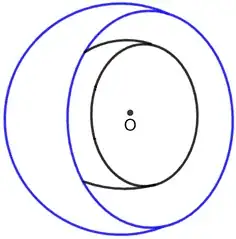FORNOTE: Hey all :) this is my first time posting and I apologise if I have written a block I wanted to be as precise with my question and reasoning as possible, also the question is summarised in the first paragraph while the rest is me explaining what I have thought about doing (stack exchange told me to do so). I hope one of yous has an answer and I look forward to reading it.
My question can be summarised as follows, where I will describe context later. Lets say we have two hollow spheres, one with radius r and another with radius $r+\alpha$, for $\alpha$ positive, and the smaller hollow sphere is inside the larger one like a nesting doll. The volume between these sphere's has a pressure and the value of this pressure is important for my purposes. The sphere's are also sufficiently elastic and I would like to know what physical law (and hopefully equation) would govern the pressure change within the volume between the two spheres if the outer sphere were to be stretched. i.e The volume between the spheres increases. I know that, in the long run, what will happen is that the smaller sphere will expand itself but this is only due to a pressure gradient and therefore negative (relative) pressure must have been created in the first place. This is important to the context as the model will implement change in the system incrementally and the pressure gradient will have to be large enough to overcome resistive elastic forces of the membranes. NOTE: whenever I say sphere I mean hollow sphere.
I have thought about using the ideal gas equation but unfortunately, in the full context of the system I am trying to model, the volume between the 'spheres' is actually a mixture of gas and liquid, not to mention that the gas equation is less than ideal for most purposes. The latest idea I have had is using the Laplace law for spherical membranes but I am not too familiar with it as I have learn what I know through reading articles online. Is it modifiable to work with non spherical structures, if so how?
And most ambitiously would such an approach work and be scientifically sound: From the laplace eq. for spherical volumes: $P_i - P_o = 2 \gamma /r$ where $\gamma$ is the surface tension of the membrane. I can call the pressure inside the small sphere $P^{1}_i$ and the pressure enclosed between the two spheres $P^{2}_i$. If I know the radius of the larger sphere has expanded to an amount then from the equation (using $p_o = atmospheric pressure$) I can see what the pressure inside the system should be, subtract it from $p^{1}_i$ & $p^{2}_i$ to find the pressure difference.
Thanks all.
